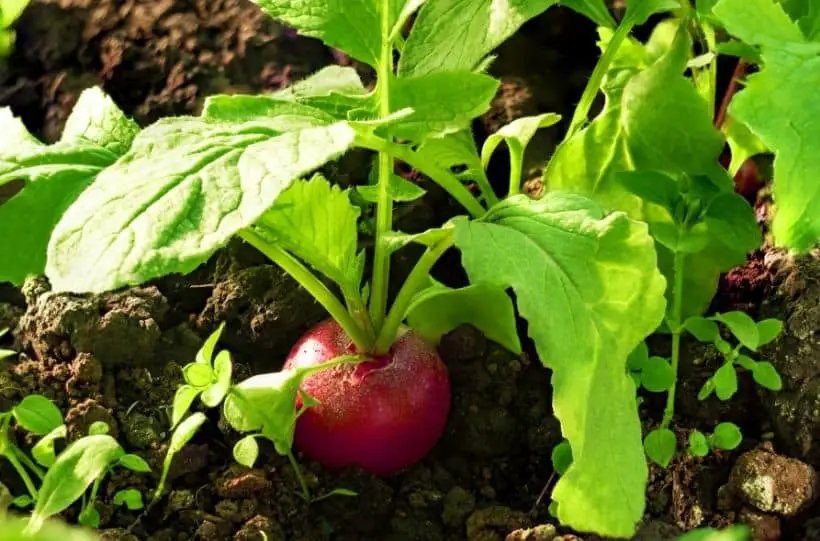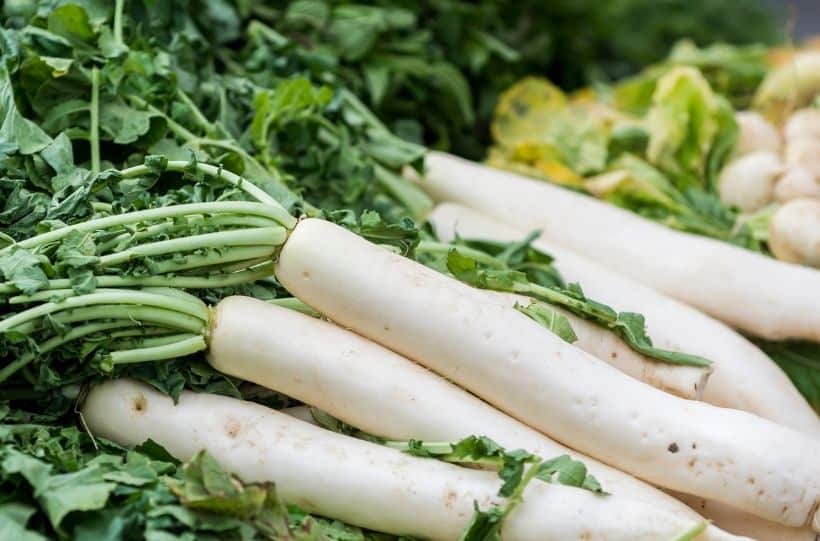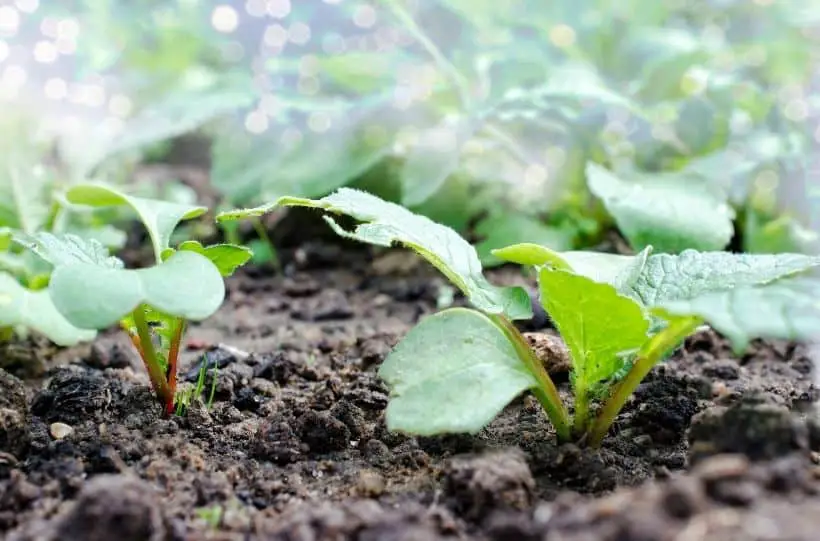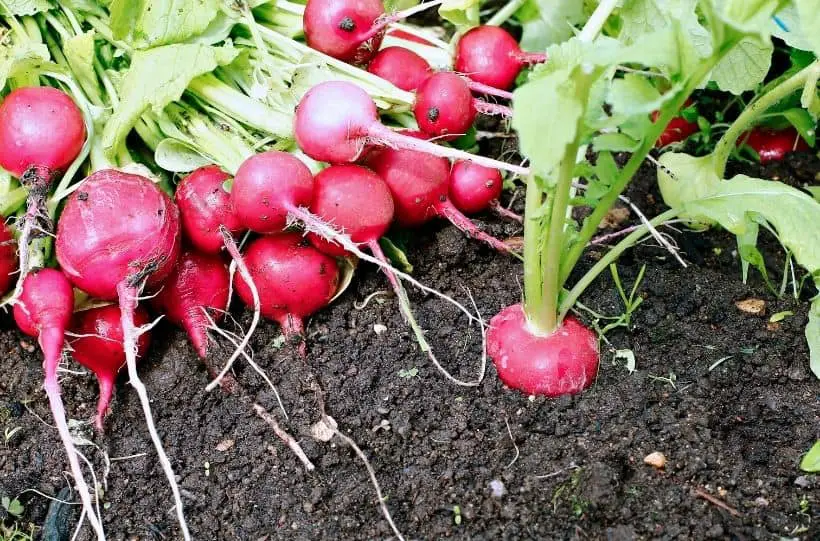How to Grow Radishes
Growing radishes is a great way to make the most of your garden space. This is because these fast-growing plants make the perfect addition to your garden as a companion plant.
Radishes make an amazing addition to your garden because they’re a quick-to-grow vegetable that grows well with other plants.
You can plant your radishes along the outer edge of your garden beds and they will be harvested long before you have issues with other plants needing the space, making for a great way to get the most use of your garden space.

Popular Radish Varieties
Here are some of the most popular radishes to grow in the home garden:
- Cherry Belle (spring variety)
- Early Scarlet Globe (spring variety)
- Snow Belle (spring variety)
- Icicle (summer variety)
- Scarlet King (summer variety)
- Daikon (winter variety)
- Round Black Spanish (winter variety)

How to Plant Radishes
Radishes are a taproot and need to be started directly in the garden to truly thrive. If you try starting them indoors and transplanting them to the garden they will suffer transplant shock and fail to thrive.
Sow your radishes directly in the garden 1 inch apart and at least 1 half to 1 inch deep. After about a week your shoots will be developed enough to thin out your radishes to about every 2 to 3 inches.
For larger radish varieties like Daikons, you will want to give them more room to grow. For these large radish varieties, you should thin to 4 to 6 inches apart, though you can sow them thinner in the beginning, to reduce how much thinning you will need to do.
This small space is plenty of room for your radishes to grow over the next few weeks. You can use radishes to make use of space in your garden that is not yet needed for young plants.
How to Grow Radishes
Watering your radishes is very important. You should make sure your radishes get at least an inch of water a week to ensure that they can grow properly. If your soil is sandy you may find that it dries out faster. Radishes grow very quickly and go through water at a fast rate so a lack of water can lead to stunted growth.

Weeds tend to quickly snuff out radishes by taking up resources and space that they need to thrive. While traditional weed control options like mulch are not the most friendly option for radishes because of how small they are and how fast you will be harvesting them. You should weed around your radishes often to prevent weeds from taking over.
Fertilize your radishes at least once while growing to help ensure that they have the nutrition they need to reach their full potential and for the plants that will be left behind after you harvest your radishes.
Growing Radishes in Containers
Radishes, like carrots, can be grown in containers. This is a great way to grow more food. Your radishes will need a wide container of at least one gallon to grow. Fill your pots with well-draining and nourished soil and add plenty of fresh compost.
Sow your radishes 1 inch apart from the same as you would in the garden and thin to 2 inches apart after the true leaves have begun to form.
Pests and Your Radishes
Radishes tend to attract a lot of pests. This makes them a great crop for attracting pests away from the rest of the garden but this can lead to losing some of your crops to pests.
Radishes are a favorite of rabbits that will eat both the greens and the radish itself. You can use radishes as a barrier that encourages rabbits to eat them and not your other young tender plants.
Insects love radish plants and their tender greens. You may find a whole host of insects bothering your radishes including aphids, cutworms, flea beetles, and cabbage loopers.
Check on your radishes often to protect the crop and to help prevent the spread of these insects to the rest of your garden.
Checking them while weeding a few times a week is a simple way to control pests without actually repelling them from your radishes, to encourage pests to go for them and not the rest of your garden.
Companion Planting
Radishes companion plant well with beets, cucumbers, lettuce, mint, parsnips, peas, spinach, squash, and tomatoes.
Harvesting your radishes
Learning when to harvest your radishes can be a bit tricky. Make note of how long the variety you are growing takes to complete its growth cycle and start checking your radishes around this point.
If you wait to harvest for too long your radishes can end up turning pithy. To help see if your radishes are ready to harvest you can brush the soil away from the top of the roots of a few. Once they reach about an inch visible you are ready to harvest.

To harvest your radishes gently pull them up out of the soil. This will help to loosen the soil for your other plants that will soon be getting larger.
Using your radishes
Both the root and the greens of radishes are edible. The root of radish is crispy and crunchy while the leaves are tender.
Some varieties of radishes have an almost hairy leafed top and are best served cooked while smooth leaf varieties can make a wonderful addition to your summer salads.
Cut off the tops and tails of your radishes to store them in the refrigerator. The leaves can be washed and stored in the refrigerator for use over a few days, while radishes will usually last for a few months in the refrigerator.
Both the leaves and roots of radishes can be an amazing addition to your salads and other summer favorites.

